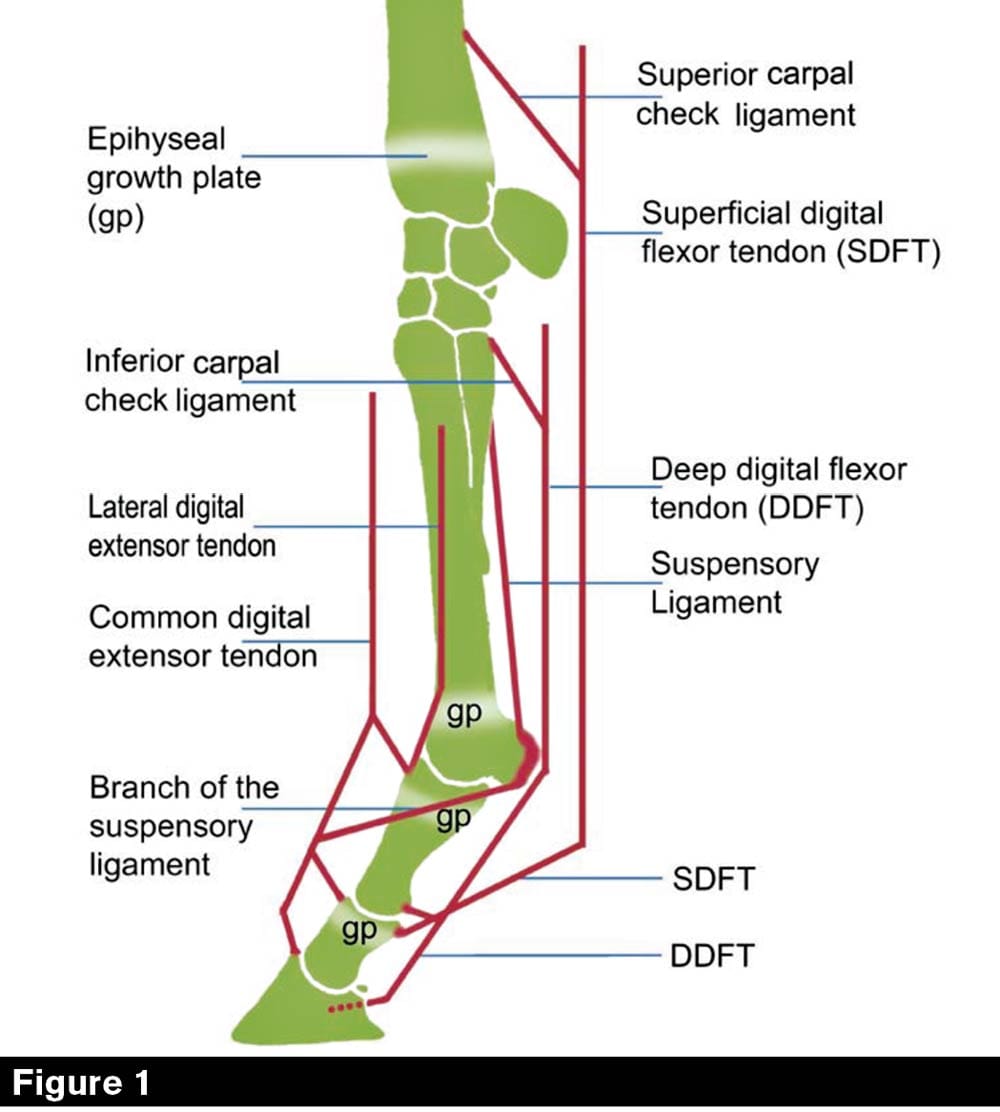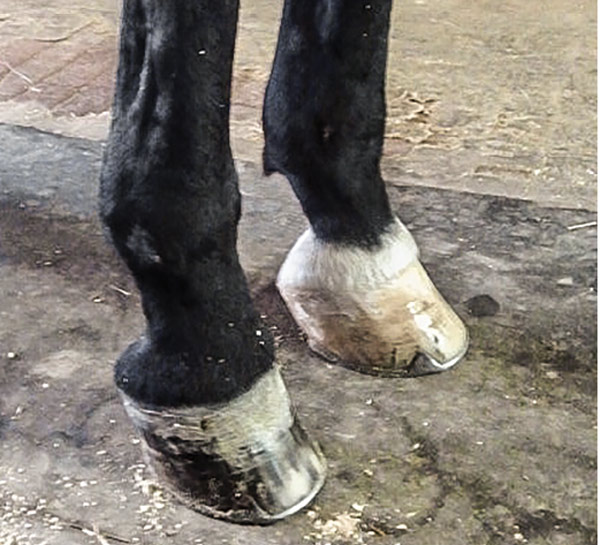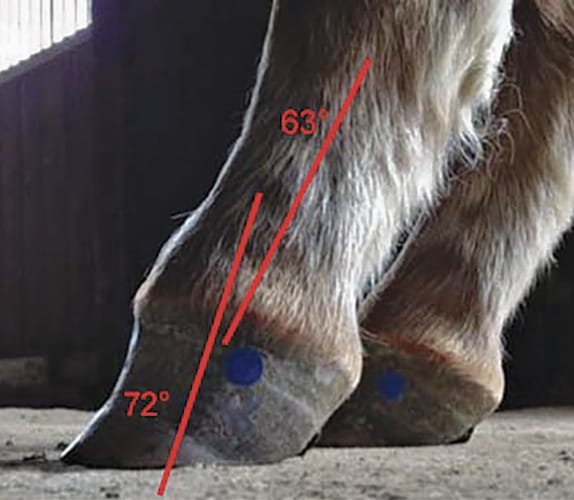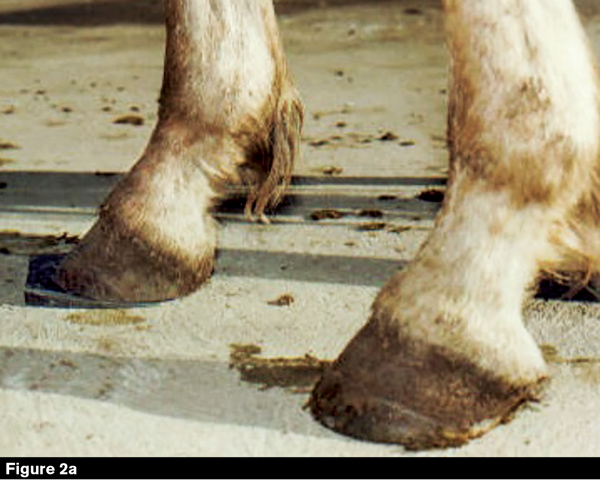club foot horse cause
If a horse has a clubbed foot then the foals that mare or stud produces will have one as well. Club foot is one of the most common deformities in the horse world.
Club feet are surprisingly common with up to 60 of the domestic horse population exhibiting at least minor characteristics.

. Club foot can occur before or after birth in foals. A diet rich in calories and sugar can cause problems as well. Often the club foot or feet are secondary to OCD lesions in the shoulder for instance says Burns.
What we see externally as the equine clubbed foot is actually caused by a flexural deformity of the distal interphalangeal joint coffin joint. Causes of Club Foot in Horses The deep flexor tendon is shorter than the bones causing a pulling on the coffin bone in the hoof which causes a deformity in the shape of the hoof Congenital deformity at birth occurring within the mares uterus likely due to multiple factors. Unless there is a bony deformity of the foot that is causing the bone to be misshapen these cases are caused by soft tissue contraction from limited range of motion andor weight bearing in the affected limb.
Club foot has several possible causes. If its painful for the horse to put weight on that limb or favors it a little bit the flexor muscles eventually contract and pull the heel up with the horse walking more on the toe. Therefore the term club foot in horses does not apply in these cases.
All this is further explained here. Often club foot affects both front legs with one being more severe than the other. Risk factors Boys are about twice as likely to.
The actual hoof will also be a size or two smaller than the other and a different shape. The un-evenness in the stride and musculature will cause lameness because generally there is more stress placed on the club. High heels in a normal hoof are very different from the high heels of a club foot and poor trimming does not result in a club foot.
What Can You Do About Uneven Hoof Growth. Any event that leads the young horse to load its weight unequally on its front limbs puts a foal at risk for developing deformities. In the genetic club footed horse the cannon bone of the clubby foot is slightly shorter and so too is the tendon shorter than the normal leg.
Poor trimming can be corrected whereas a club foot cannot be corrected. A foals bones growing. Causes include nutritional issues heredity position in the uterus or.
There are several causes of club foot. Cause it bears little resemblance to the clubfoot de-formity in children referred to as congenital talipes equinovarus45 Presumably the term was coined to describe the upright or straight tubular appear-ance of the foot where there is little expansion of the hoof capsule giving a club-like appearance but. Telltale signs of a club foot may include an excessively steep hoof angle a distended coronary band growth rings that are wider at the heels contracted heels and dished toes.
A clubbed foot it a contracted tendon meaning that the leg with the club will not be able to reach as far. Causes include nutritional issues heredity position in the uterus or. Several theories address the potential causes ranging from a genetic predisposition to hoof or body injury to.
Caused by abnormal contraction of the deep digital flexor tendon a club foot puts pressure on the coffin joint and initiates a change in a hoofs biomechanics. But anything that makes the horse place more weight on its toe can cause a clubfoot. Club foot can develop in mature horses too for similar reasonsany injury or chronic pain that causes a horse to consistently favor one foot can lead to contracting and shortening of the muscles and tendons specifically the deep digital flexor tendon and muscle apparatus in that leg eventually pulling the foot into a more upright position.
Young horses may develop a clubfoot in response to pain in the shoulder or elbow caused by osteochondritis dissecans OCD lesions a defect in the cartilage that affects the smooth action of the joint. Club foot refers to a tendon flaw that causes the hoof to be very upright. The primary one is genetics.
Club feet can also be due to a pain response. Horses affected with club foot develop a flexural deformity of the coffin joint due to a shortening of the musculotendinous unit that starts high up in the limb and inserts on the coffin bone in the foot resulting in an upright conformation of the foot. What we see externally as the equine clubbed foot is actually caused by a flexural deformity of the distal interphalangeal joint coffin joint.
Foaling trauma foal grazing stance overly fast growth of limbs injury or even something as benign as over zealous cosmetic trimming of. A club foot alters a horses hoof biomechanics frequently leading to secondary lamenesses. Affected horses tend to land toe-first and their heels growth rate is amplified relative to the toes.
But anything that makes the horse place more weight on its toe can cause a clubfoot. The equine club foot is defined as a hoof angle greater than 60 degrees. Young horses may develop a clubfoot in response to pain in the shoulder or elbow caused by osteochondritis dissecans OCD lesions a defect in the cartilage that affects the smooth action of the joint.
The cause of clubfoot is unknown idiopathic but it may be a combination of genetics and environment. The equine club foot is defined as a hoof angle greater than 60 degrees. After birth foals acquire club feet when the bones grow faster than the tendons.
The differences in growth rates that cause club feet could be the result of a number of factors including too rapid growth diet imbalances inappropriate exercise traumatic injury and inflammatory responses.

Defining And Fixing A Horse S Club Foot
So Called Club Foot By James R Rooney Dmv

Defining And Fixing A Horse S Club Foot

What Advice Has Been Most Helpful When You First Encounter A Club Foot
Club Foot In Horses Equine Chronicle
Club Foot In Horses Equine Chronicle
Do Any Other Hooved Animals Need Shoes Besides Horses Quora

The Importance Of Physical Maturity In The Horse Horsetalk Co Nz

Horses And Dogs Healthy Horses Equine Veterinary

Ballerina Syndrome Where The Heels Remain Off The Ground Even At The Download Scientific Diagram

Defining And Fixing A Horse S Club Foot

Flexural Deformities In Horses Musculoskeletal System Merck Veterinary Manual






